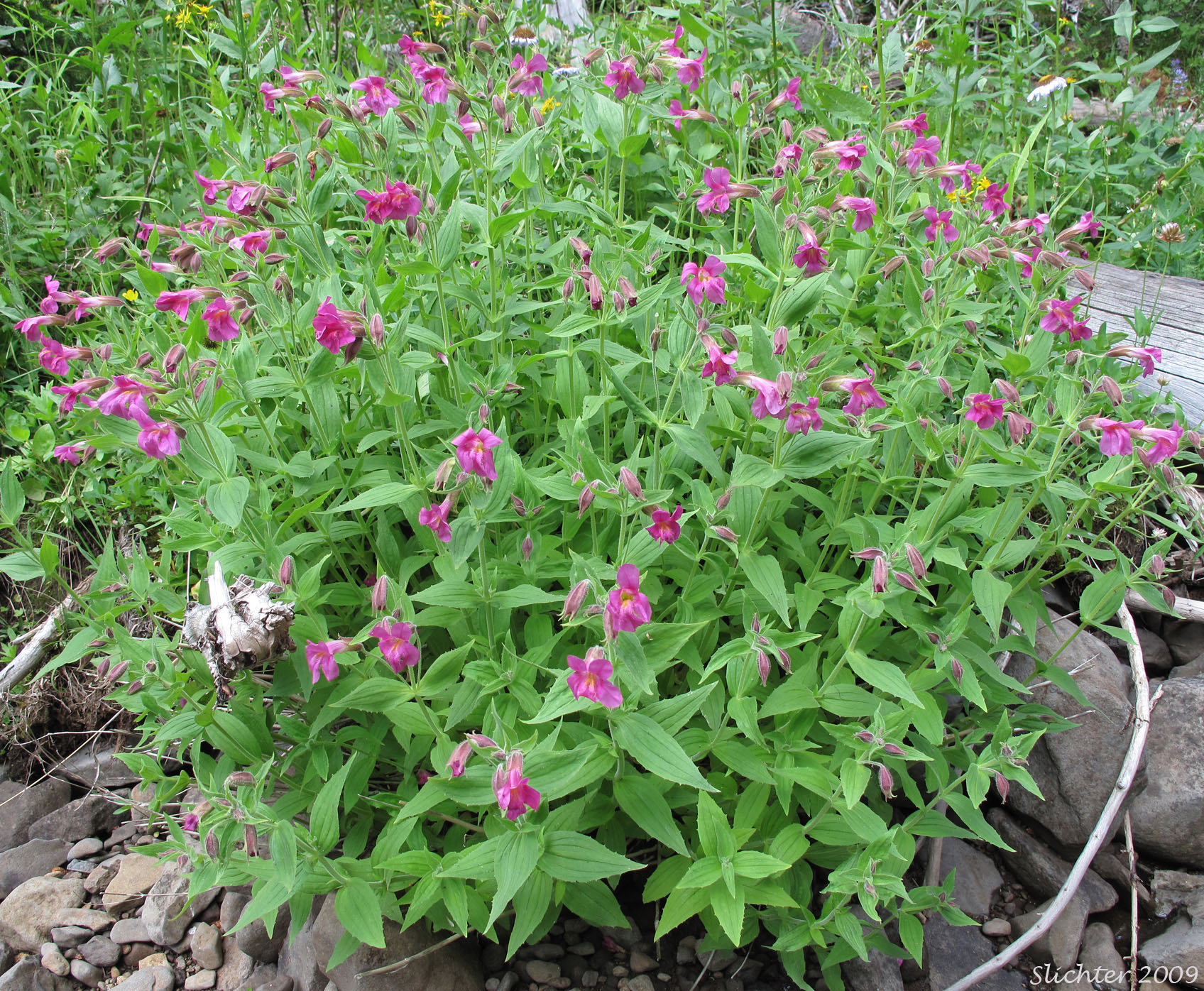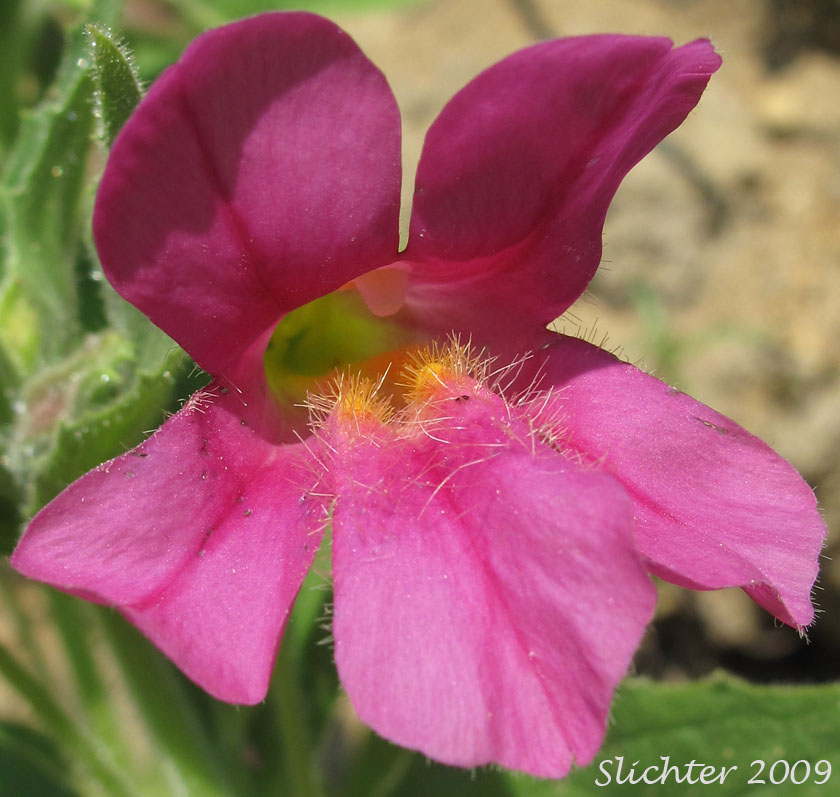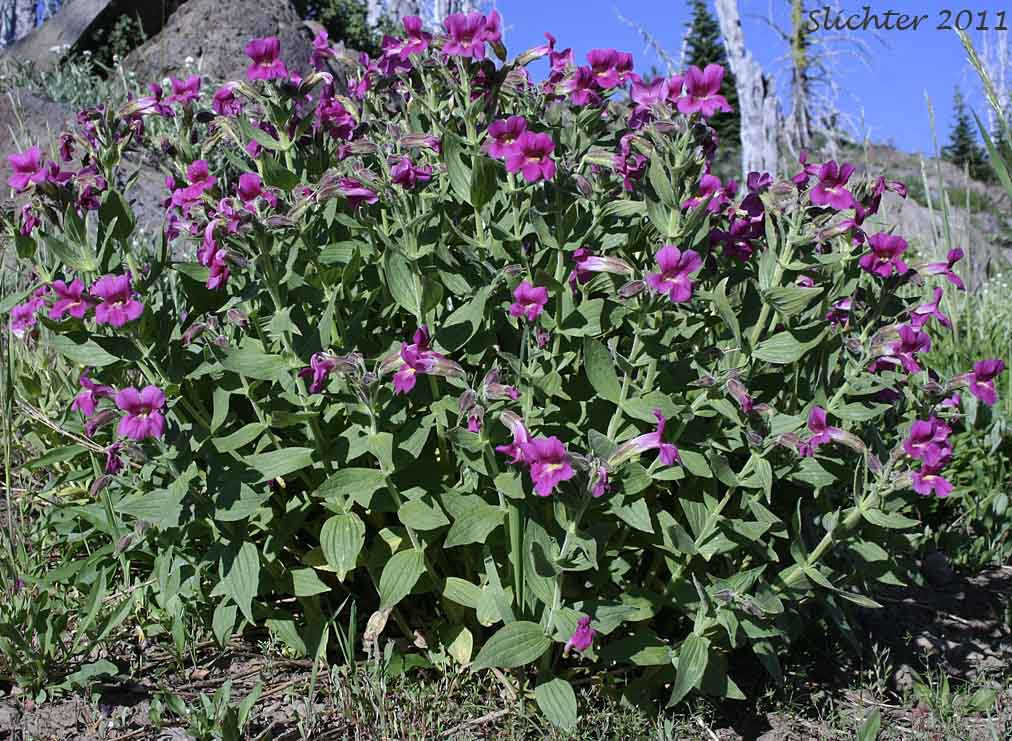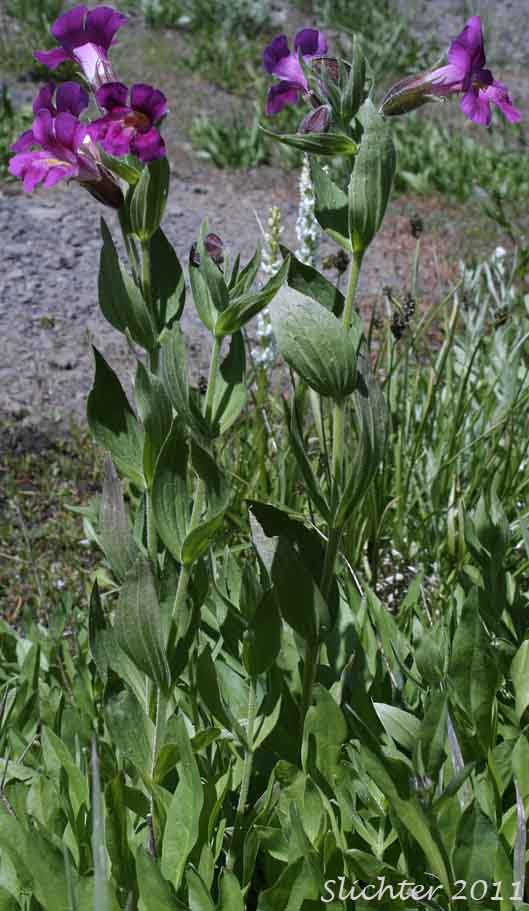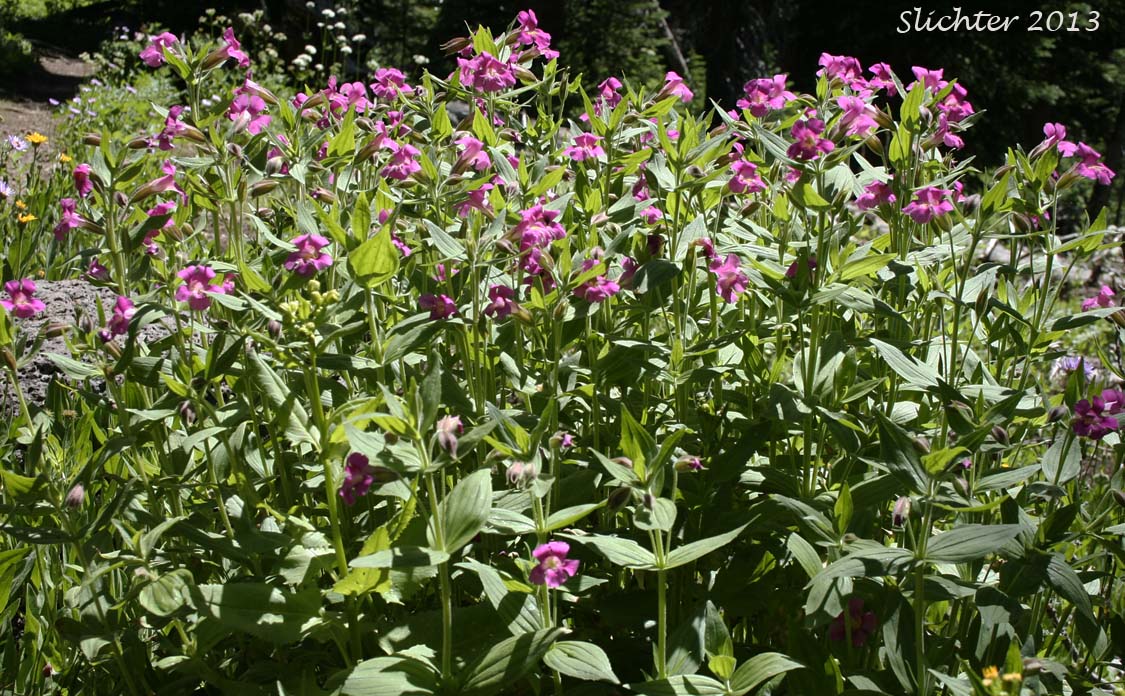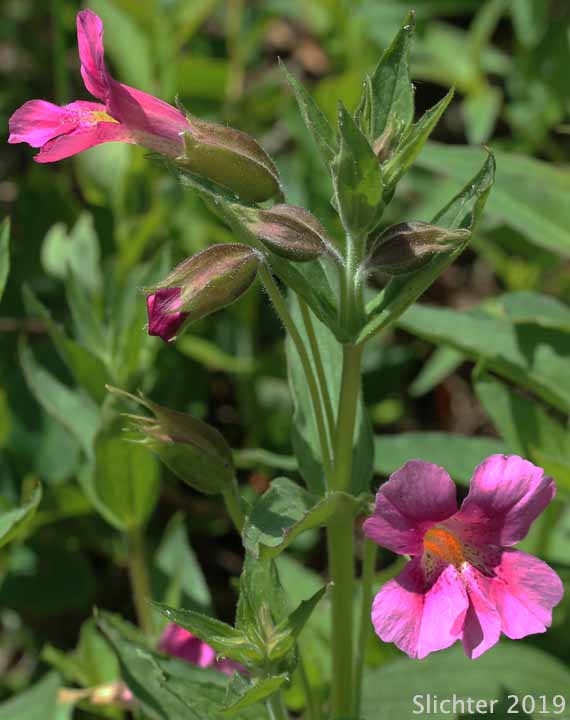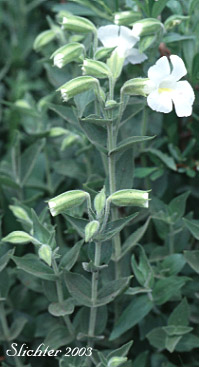Lewis' monkey flower is an attractive perennial with clumped, erect stems from 30-80 cm high. The stems arise from stout, branched rhizomes. The herbage is sticky-hairy. The opposite leaves are lance-to egg-shaped with pointed tips and have palmate venation of 3-7 strong veins. The leaves range from 3-7 cm long and the margins are irregularly toothed. The lower leaves are small and soon wither.
The inflorescence is an open, few to several flowered raceme. The calyx is 18-28 mm long with glandular-pubescent hairs. The calyx lobes are roughly equal in size and length, measuring 3-7 mm long. The lobes are narrowly triangular in shape, often with recurved tips. The showy flowers are pinkish-purple with yellowish throats. They are tubular with 2 lips, with the 5 lobes of the lips about equal in size. The corolla ranges from 3-5 cm long (of which the tube is 22-37 mm) and from 2-4 cm wide.
Lewis' monkey flower is found in and along streams and in other wet places at medium to higher elevations in the mountains.
Lewis' monkey flower is found in mountainous areas from British Columbia south to California and east to Alberta, and south through the Rocky Mts. of Montana, Wyoming, and Utah.
Close-up views of the corolla and calyx of Lewis' monkey flower as seen on Wedge Mountain, Wenatchee National Forest.....June 8, 2009.
Lewis' monkeyflower blooming at moist seeps along the Roads End Trail, Strawberry Mountain Wilderness......August 19, 2011.
Lewis' monkeyflower as seen at left in a moist area (a high tributary of Lake Creek) along the High Lake Trail, Strawberry Mountain Wilderness.........July 17, 2013. The photo at right shows a blooming Lewis' monkeyflower in moist meadows around the trailhead for the Deadman Canyon Trail #1869 at Fish Lake Campground, Wallowa-Whitman National Forest.....July 18, 2019.
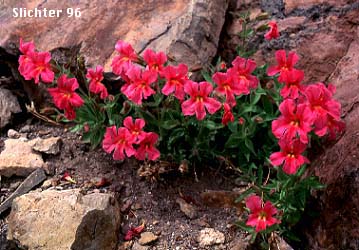
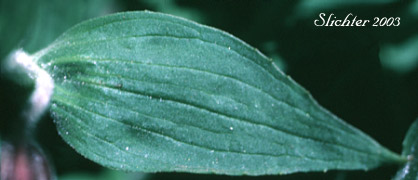
The photo above shows a non-pigmented plant from the Steens Mt........July 16, 2000.
